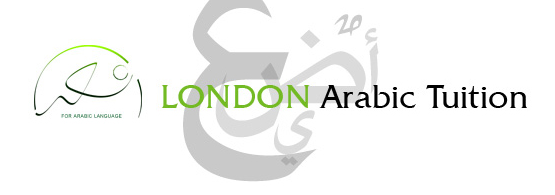Need to take on another test? These 6 Arabic dialects are the most hard for English speakers to learn.
Certain individuals love a decent test. We as of late provided you with the rundown of the simplest dialects for English speakers to learn, however perhaps you lean toward life on hard mode. We checked in with language master Benjamin Davies from our Didactics group to decide the six hardest dialects to learn for English speakers. They might take somewhat longer to dominate, yet they’re most certainly worth the test!
The Hardest Languages To Learn For English Speakers
1. Mandarin Chinese
hardest dialects to learn mandarin Chinese
Strangely, the hardest language to learn is additionally the most broadly communicated in the local language on the planet. Mandarin Chinese is trying for various reasons. As a matter of first importance, the composing framework is amazingly hard for English speakers (and any other individual) acquainted with the Latin letters in order. Notwithstanding the typical difficulties that accompany taking in any language without any preparation, individuals concentrating on Mandarin should likewise remember a great many unique characters, dissimilar to anything found in Latin-based dialects.
Yet, composing isn’t the main troublesome aspect of learning Mandarin. The apparent idea of the language makes talking it extremely hard too. There are a few Chinese lingos, including Cantonese — spoken essentially in southeastern China, just as in Hong Kong and different pieces of Southeast Asia — which have diverse composed characters and articulations and are additionally undeniably challenging to learn. Mandarin Chinese (the most well-known lingo) has four tones, so a single word can be articulated four unique ways, and every elocution has an alternate significance. For example, the word mama can signify “mother,” “horse,” “harsh” or “chide” — relying upon how you say it.
2. Arabic
Following up of the hardest dialect to learn for English speakers is Arabic, which is additionally in the main five most communicated in world dialects. First off, there are many assortments of the Arabic language — by and large, characterized by the locale or country wherein they’re spoken — that can be fundamentally not the same as each other. So the initial step is to pick which lingo you need to seek after, however, that is the simple aspect.
Arabic is one more language with a non-Latin letter set. Its 28 content letters are more straightforward for English speakers to understand than a large number of Chinese characters, however, it’s as yet an acclimation to get comfortable with another composing framework. What makes perusing and writing in Arabic especially trying for fledglings is the rejection of most vowels in words. Arabic is likewise composed from right to left rather than left to right, which takes some becoming accustomed to.
There are additional attributes of communication in Arabic that make it difficult to learn. A portion of the sounds utilized don’t exist in different dialects or are just new to English speakers, incorporating sounds made toward the rear of your throat. The language structure is testing as well; action words will more often than not precede the subject, and you need to get familiar with a double type of words notwithstanding the solitary and plural structures.
3. Clean
From here on out, the hardest dialects to learn get less troublesome yet are still very testing. Clean got the number three spot on our rundown.
Spelling and language are two or three regions in which Polish can give English speakers trouble. Words are stacked with consonants, which makes them hard to spell and articulate. For instance, szczęście signifies “bliss” and bezwzględny signifies “merciless.” Ruthless, for sure. As far as language, there are seven cases: it resembles German on steroids.
On the brilliant side, Polish uses a Latin letter set, so the letters are significantly more natural to English speakers than those utilized in Chinese, Arabic, and other non-Latin dialects. Moreover, having the option to communicate in Polish as a subsequent language places you in a pined for bunch, considering Poland’s creating status as a significant economy in Europe.
4. Russian
Positioning fourth on our rundown of hardest dialects to learn, Russian uses a Cyrillic letter in order — comprised of letters both recognizable and new to us. Be that as it may, the speaker is careful: a portion of the Cyrillic letters might look natural yet utter an unexpected sound in comparison to the Latin letter they take after. For example, “B” in the Cyrillic letter set makes a “V” sound.
Linguistically, Russian isn’t quite so troublesome as Polish yet darn close. Clean has seven cases, while Russian has six. Likewise, Russians discard the action word “to be” in the current state, which can confuse amateurs when they attempt to frame essential sentences. In Russian, “I’m an understudy” would basically mean “I understudy.” Like Polish, Russian uses a ton of consonants bunched together, which makes spelling and elocution a test.
In spite of its trouble, Russian may merit the additional work to learn. It’s an amazingly strategically and socially important language, making the way for the various professional and relaxation openings.
5. Turkish
Here is another word for you: agglutinative. Turkish is an agglutinative language, which fundamentally implies prefixes and postfixes are appended to words to decide their significance and demonstrate heading, rather than utilizing separate relational words. This outcome is incredibly long action words, as konuşmayı reddediyorlar (“they won’t talk”).
Turkish additionally includes an idea English speakers might view as befuddling: vowel amicability, where vowels are changed or endings with vowels are added to make a word stream all the more easily. An enormous number of new jargon words, of Arabic beginning, exacerbate what we’d consider being probably the hardest language to learn.
The uplifting news for Turkish students is that there are somewhat not many sentence structure special cases in contrast with different dialects, spelling is direct to dominate, and it’s a cool method for investigating an uncommon agglutinative language (phonetics geeks gather!).
6. Danish
Which of these isn’t similar to the others? Indeed, we have delegated Danish as the most un-hard of the hardest dialects to learn. Assuming you read our article on the simplest dialects, you might recollect that the Germanic dialects from Scandinavia to a great extent ruled that rundown. Indeed, Norwegian and Swedish took the best two spots. What’s more similar to those dialects, Danish has somewhat basic language structure ideas and offers a lot of cognates with English.
So for what reason is Danish on this rundown of hardest dialects to learn? Articulation. Words sound in no way like the manner in which they are spelled, which can be very unpleasant for an amateur. For instance, mit navn er (“my name is”) is articulated “meet now’n air.” Mastering Danish elocution takes a decent arrangement of work on, making it a fundamentally harder language to learn than its Germanic partners.




Leave a Reply
You must be logged in to post a comment.